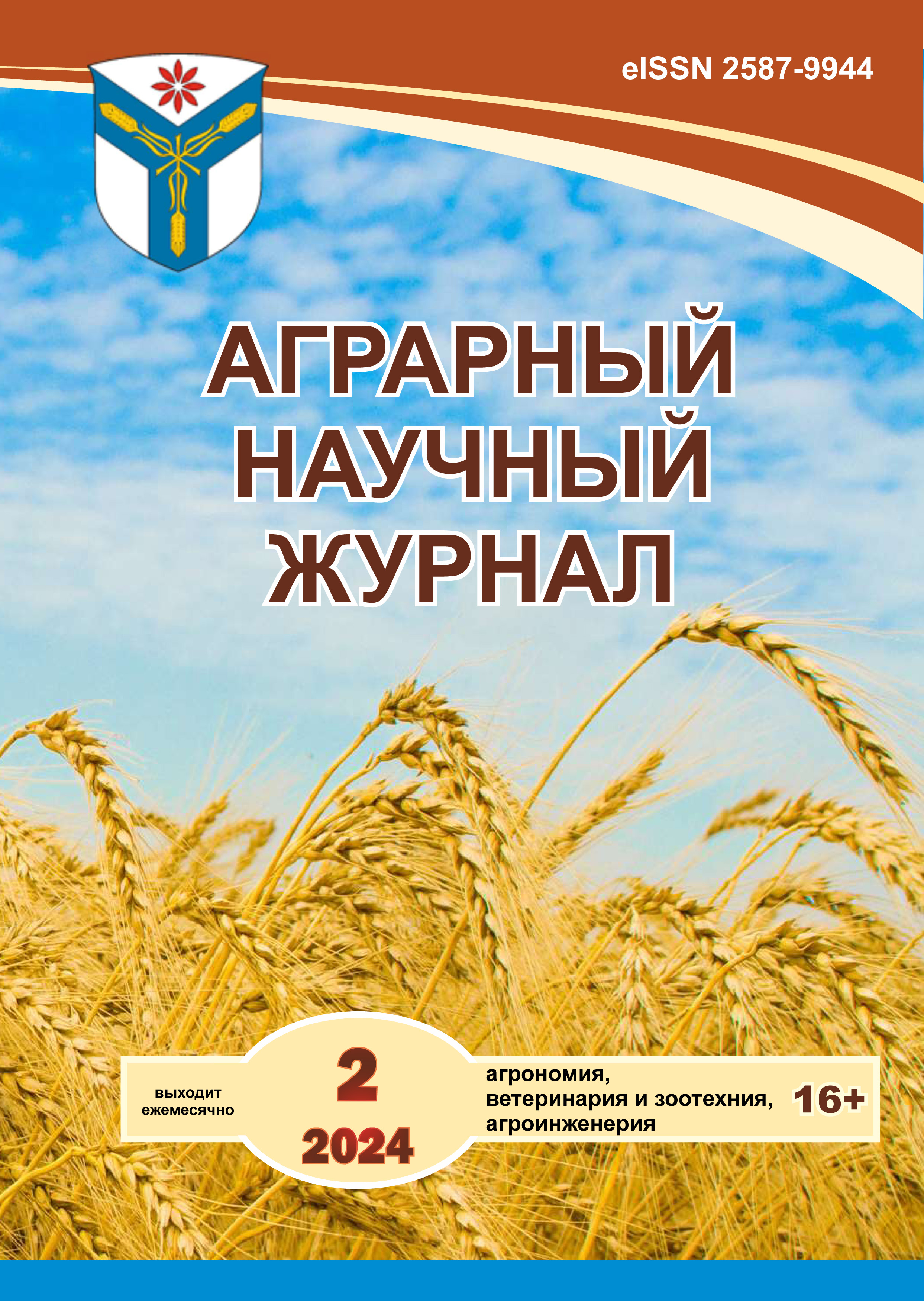Improving the cultivation technology of corn for grain depending on the application of agrochemicals in the Lower Volga region
DOI:
https://doi.org/10.28983/asj.y2024i2pp28-36Keywords:
corn, hybrid, ROSS 199 MV, Krasnodarsky 291AMV, FAO, herbicide, mineral fertilizers, growth-stimulating preparations, phenological phases, leaf area, ; elements of productivity, grain yieldAbstract
The article presents data on the effectiveness of the application of mineral fertilizers, growth-stimulating preparations, herbicides and their combined effect on the productivity of various corn hybrids according to FAO in the Saratov Right Bank. Observations of the growth dynamics of the leaf surface of plants by development phases showed that at different stages of the growing season the leaf apparatus forms differently. The peak growth of the leaf apparatus occurs during the period of darkening of the threads of the cobs - the milky-waxy ripeness of the grain; by harvesting this indicator is greatly reduced. The largest leaf surface area on average over three years was after complex application of mineral fertilizer with growth-stimulating preparations - NPK + Agree’s Boron + Agree’s Aminovit. For the hybrid ROSS 199 MV it was 22.5 thousand m2/ha, for the hybrid Krasnodar 291AMV - 23.8 thousand m2/ha. It has been established that the most effective method is the complex application of the studied fertilizers and growth-stimulating preparations. They provide better growth and development of plants, a noticeable increase in leaf area and crop structure elements. The combined application of mineral fertilizers and growth-stimulating preparations made it possible to obtain maximum grain yield. On average, over three years of research, it was 5.59 t/ha for the hybrid ROSS 199 MV, and 6.13 t/ha for the hybrid Krasnodar 291AMV.
Downloads
References
Агафонов Е. А., Батаков А. А. Применение удобрений под гибриды кукурузы разного срока созревания // Кукуруза и сорго. 2000 б. № 3. С. 6–7.
Агафонов Е. В., Батаков А. А. Система удобрения гибридов кукурузы при выращивании на зерно // Кормопроизводство. 2002. № 5. С. 18–20.
Ахметов Ш. И., Иванцов П. В., Депутатов М. А. Продуктивность гибридов кукурузы селекции компании «Сингента» в условиях юга Нечерноземья // Вестник Ульяновской государственной сельскохозяйственной академии. 2014. № 3(27). С. 6–10.
Волков А. И., Кириллов Н. А., Прохорова Л. Н. Перспективные сорта и гибриды кукурузы на зерно для Волго-Вятского региона // Аграрная Россия. 2013. № 10. С. 5–7.
ГОСТ 12038-84 Семена сельскохозяйственных культур. Методы определения всхожести. М.: Стандартинформ, 2011. 30 с.
ГОСТ 52325-2005 Семена сельскохозяйственных растений. Сортовые и посевные качества. Общие технические условия. М.: Стандартинформ, 2008. 30 с.
Государственный каталог пестицидов и агрохимикатов, разрешенных к применению на территории Российской Федерации. М.: Минсельхоз России // base.garant.ru
Доспехов Б. А. Методика полевого опыта. М.: Агропромиздат, 1985. 350 с.
Минеев В. Г., Дебрецени Б., Мазур Т. Биологическое земледелие и минеральные удобрения. М.: Колос, 1993. 415 с.
Основы научных исследований в растениеводстве и селекции: учеб. пособие / А. Ф. Дружкин [и др.]. Саратов; 2013. 264 с.
Практикум по земледелию / И. П. Васильев [и др.]. М.: КолосС, 2004. 424 с.
Сотченко В. С. Состояние и перспективы производства зерна кукурузы в Российской Федерации // Кукуруза и сорго. 2005. № 1. С. 2–8.
Третьяков Н. Н., Шкурпела И. А. Справочник кукурузовода. М.: Россельхозиздат, 1979. 160 с.
Храмцов И. Ф., Мазур Н. А. Эффективность удобрений при возделывании кукурузы на зерно на черноземных почвах лесостепи Западной
Сибири // Достижения науки и техники АПК. 2012. № 3. С. 24–25.
Шеуджен А. Х., Бондарева Т. Н., Кизинек С. В. Агрохимические основы применения удобрений. Майкоп: Полиграф – ЮГ, 2013. 572 с.
Downloads
Published
Issue
Section
License
Copyright (c) 2024 Agrarian Scientific Journal

This work is licensed under a Creative Commons Attribution-NonCommercial-NoDerivatives 4.0 International License.








